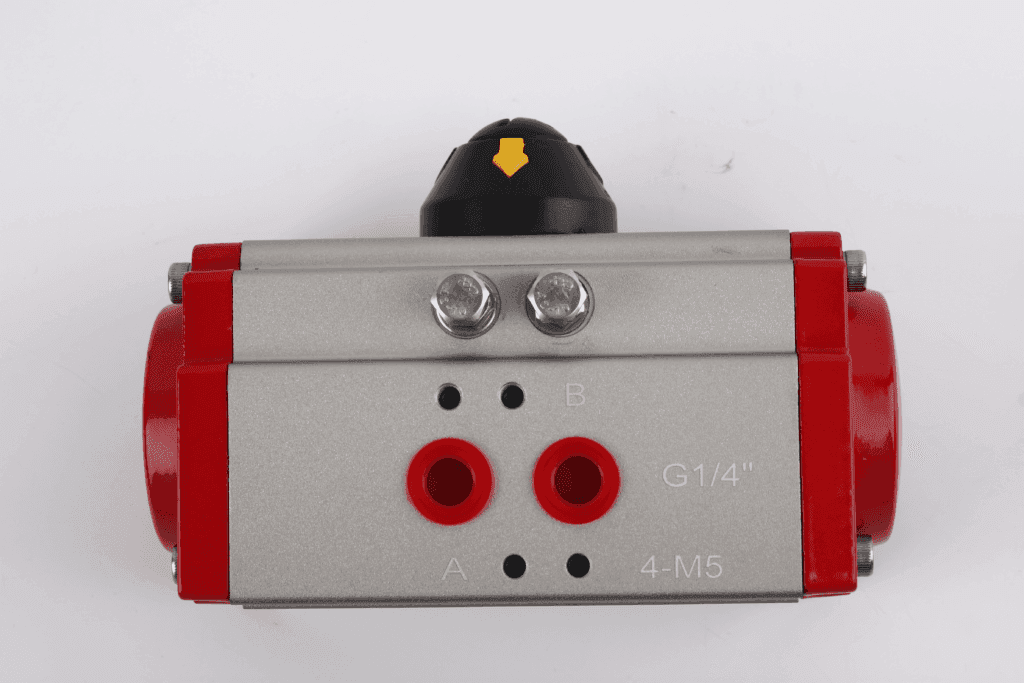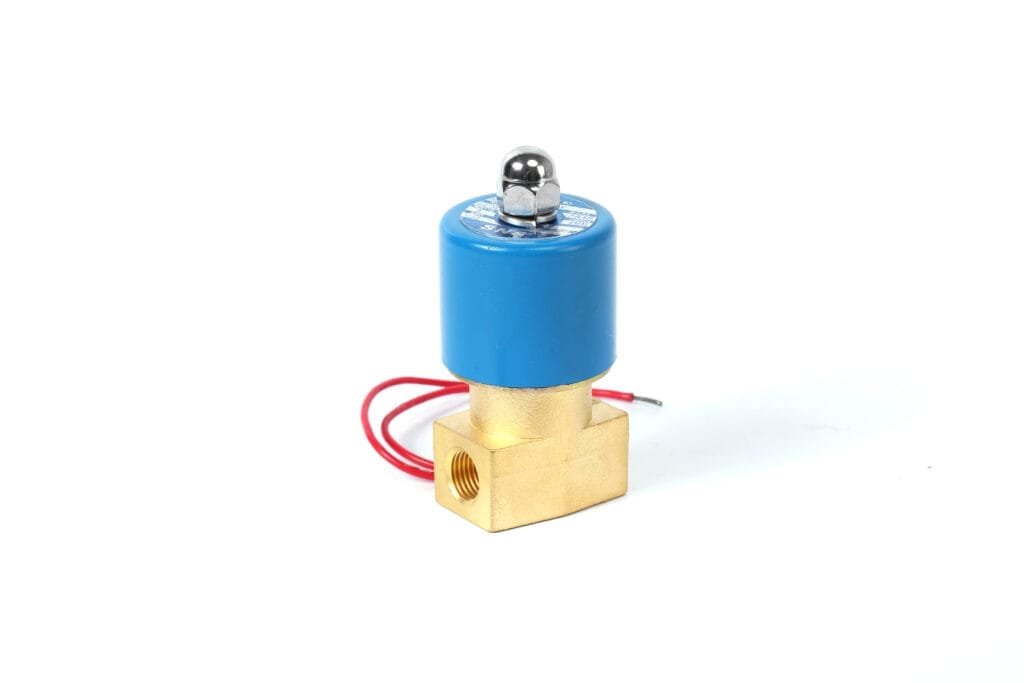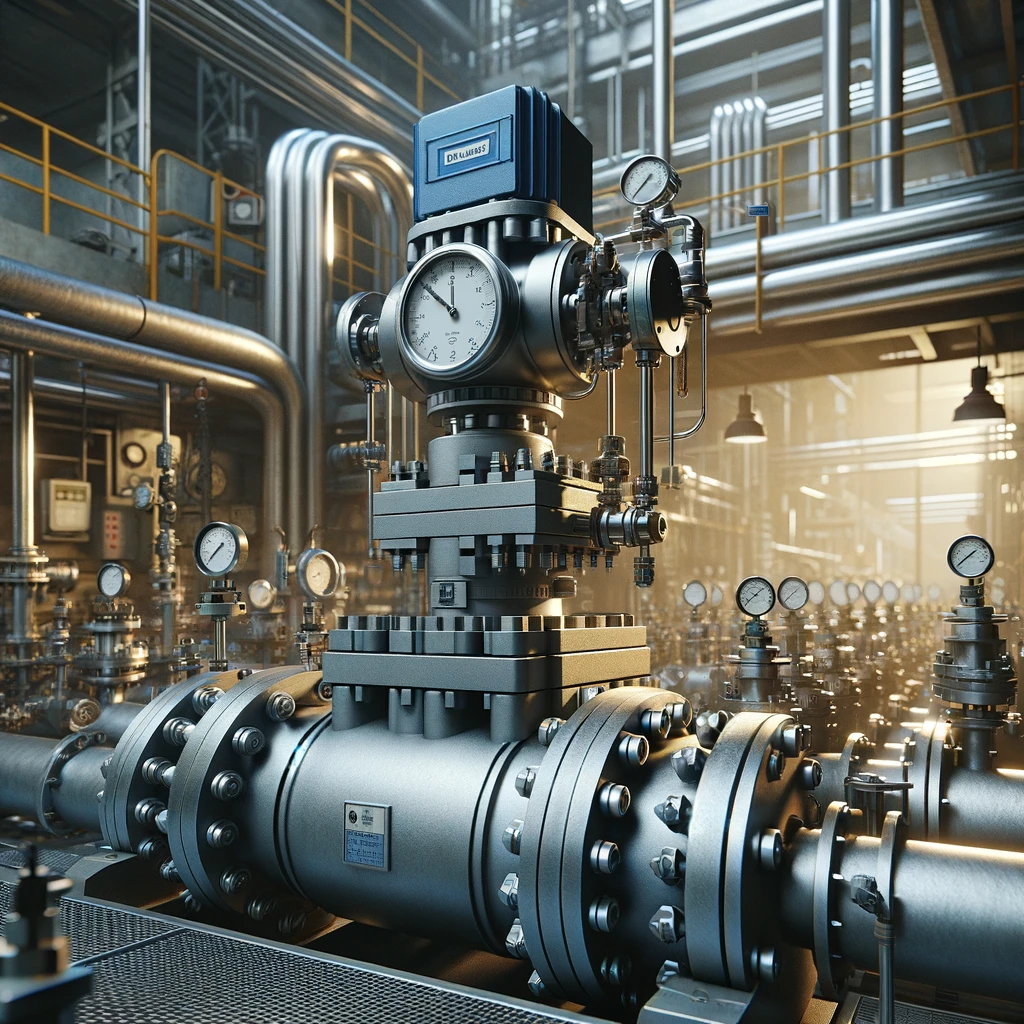Single-Acting Vs. Double-Acting Valve Actuators
Single-acting valve actuators require air or hydraulic pressure to move in one direction and use a spring to return to their original position, while double-acting actuators use air or hydraulic pressure for movement in both directions without the need for a spring. This fundamental difference affects their performance, control, and application suitability.
Valve actuators play a crucial role in automating process control by allowing valves to be remotely operated, enhancing efficiency and safety. Understanding the distinctions between single-acting and double-acting valve actuators is essential for choosing the right type for specific industrial applications, influencing reliability and operational costs.
What Is A Single-Acting Actuator?
A single-acting actuator operates valves using power in one direction only. It typically uses air pressure or hydraulic fluid to move the valve to an open or closed position. When the power source is removed, a spring within the actuator returns the valve to its original position. This design means that single-acting actuators rely on an external force for operation in only one direction, while a mechanical spring provides the force required for the return motion.
Single-acting actuators stand out for their simplicity and efficiency. They are designed with fewer moving parts, reducing potential failure points and maintenance requirements. The reliance on a spring for one of the two movements (opening or closing) minimizes energy consumption, as controlled power is used for action in a singular direction—either to open or close.
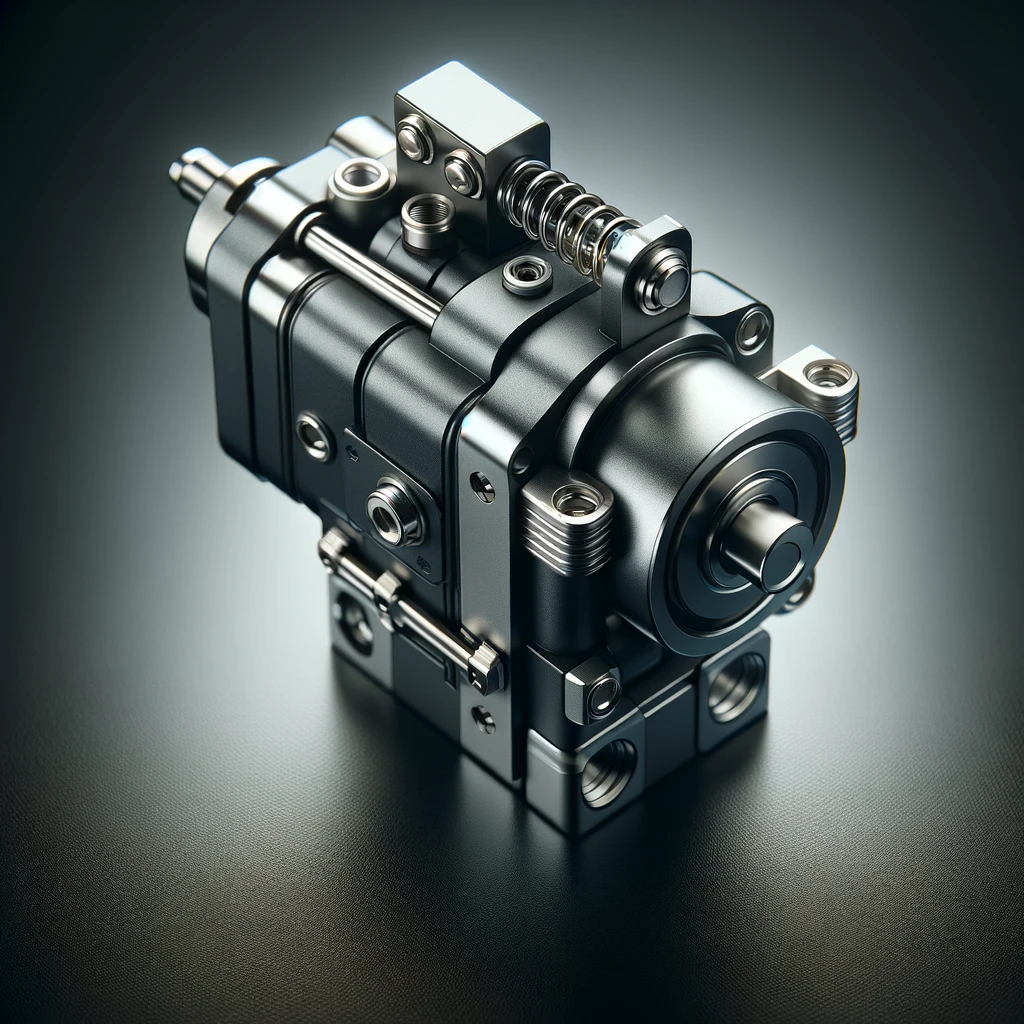
Advantages Of Single-Acting Actuator
Simplicity: Operate with a single pressure source, meaning fewer parts, simplified maintenance, and reduced costs.
Energy Saving: Only one movement direction uses pressure; return usually spring-aided, cutting energy use.
Ease of Installation: Simplified design allows for quick and straightforward setup, beneficial for tight schedules.
Increased Reliability: Fewer moving parts mean lower failure risks, crucial in critical functions.
Safety-Critical Applications: Spring-return mechanism provides fail-safe operation, auto-reverting in emergencies without power.
Space Efficient: Compact build fits into tighter spots, unlike bulkier double-acting alternatives.
Control Ease: Straightforward mode of operation enhances control, easing automation processes.
Versatile Applications: Particularly effective for quick actions, binary functions, and energy/space-sensitive environments.
Disadvantages Of Single-Acting Actuator
Higher Energy Use: Spring resistance demands additional power, raising energy needs during activation.
Spring Wear: Over time, weakened springs can slow operation and diminish reliability.
Limited Motion Control: Inability to exert equal push and pull force, reducing precision in bi-directional control.
Increased Size and Weight: Larger and heavier compared to double-acting actuators for similar force, complicating installation and supporting structure requirements.
Temperature Sensitivity: Extreme temperatures may affect spring reliability and actuator performance.
Safety Concerns: Spring failure can necessitate hazardous manual intervention in safety-critical environments.
Applicability Caveat: Best suited for simpler, cost-sensitive tasks; issues may arise in complex or crucial operations needing high reliability and accuracy.
When To Use A Single-Acting Actuator
Single-acting actuators are selected for their simplicity and efficiency in operations where automatic return is essential. They serve well in systems that require the actuator to move to a fail-safe position during a power or pressure loss. This makes them particularly suitable for emergency shutdowns and remote applications where energy supply can be unreliable. In general, these actuators are utilized in applications where only one direction of movement requires force, while the return action can rely on external forces like gravity or springs.
The compactness and reduced number of components also make single-acting actuators ideal for constrained spaces. Their design allows them to fit into tighter areas without compromising performance. Additionally, environments exposed to harsh conditions benefit from the simplicity of single-acting actuators because there are fewer parts that could potentially fail.
In scenarios where precision is less critical, and speed of operation is valued, single-acting actuators shine due to their quick response capabilities driven by their straightforward mechanism. This characteristic is vital in applications such as fire suppression systems, where timing can be life-saving.
Furthermore, cost-sensitive projects often favor single-acting actuators due to their lower upfront investment and maintenance costs. Since they possess fewer components than dual-action counterparts, the likelihood of mechanical failure reduces, translating into cost efficiency over time.
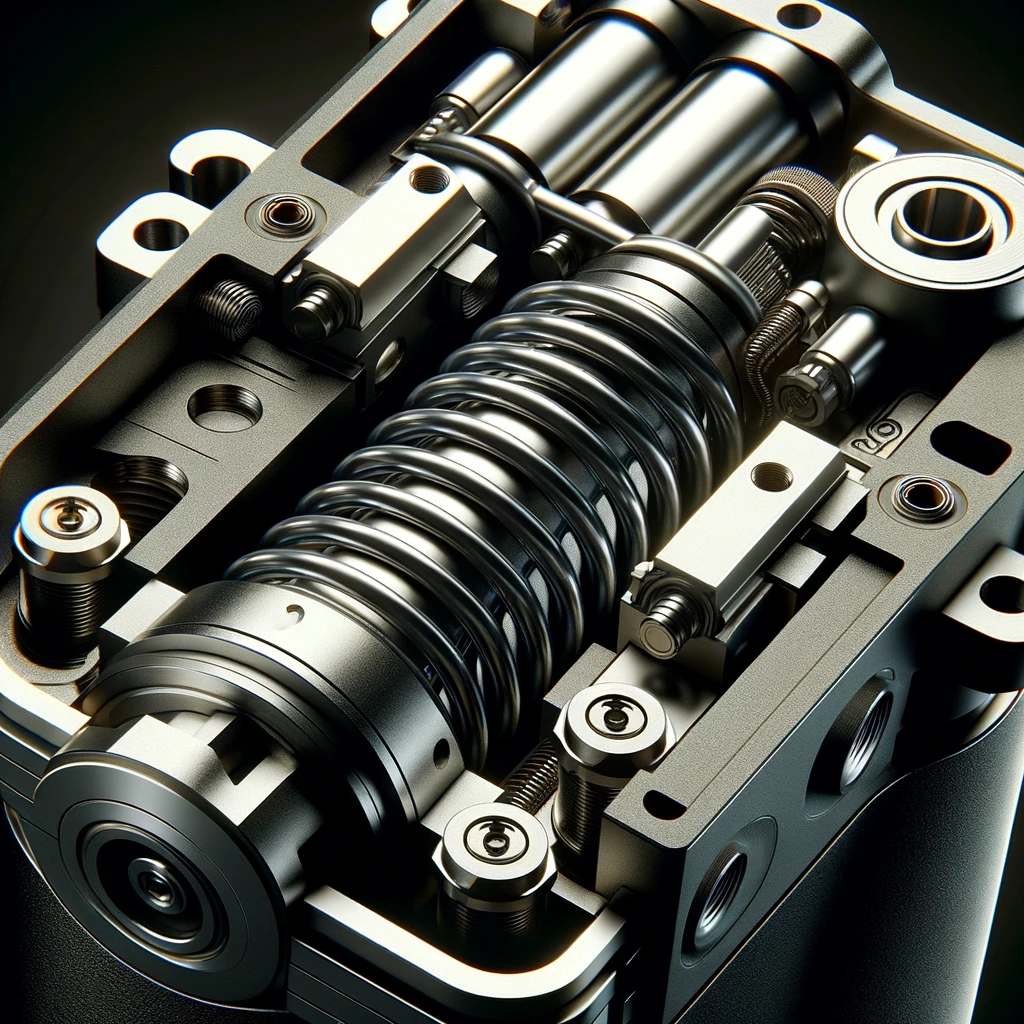
What Is A Double-Acting Actuator?
A double-acting actuator uses force from an external source to move in both directions: opening and closing the valve. This type requires a supply of power to shift the actuator to either position. Unlike single-acting actuators, which rely on an external force or spring for movement in one direction and depend on fluid or air pressure in the other, double-acting actuators require this pressure for both motions.
These actuators are complex systems. They utilize two separate chambers. Each chamber gets pressurized alternatively to facilitate movement in the respective direction. Essentially, when one chamber is filled with fluid or air under pressure, the actuator moves in one direction. Filling the opposite chamber moves it back.
Advantages Of Double-Acting Actuator
Precise Valve Control: Air pressure-driven movement allows exact positioning.
Speed Advantage: Quicker response due to air pressure acting on both open and close strokes.
Higher Torque Output: Greater force generation suitable for tough valves.
Enhanced Reliability: Fewer mechanical wear parts potentially decrease maintenance.
Safety Configuration: Fail-safe positioning possible with external controls upon air supply failure.
Versatile Performance: Adjustable open/close speeds and forces through air pressure regulation.
Energy Efficiency: Precise operation minimizes energy wastage.
Improved Feedback for Automation: Easier monitoring and adjustment for system integration with active control in both motions.
Disadvantages Of Double-Acting Actuator
Continuous Power Need: Dependence on constant power or air supply raises operational costs.
Power Reliability Issue: In power failures, can’t fail-safe; stuck in last position, risking critical processes.
Increased Complexity: More intricate design necessitates complex installation and maintenance.
Added Costs and Space: Requires extra components like solenoid valves, enhancing costs and spatial demands.
Leakage Risks: More dynamic seals increase the likelihood of leaks, impacting efficiency and maintenance.
Cleanliness Concerns: Potential leakage may threaten purity in sensitive industries.
Larger Housing: Generally bulkier than single-acting, problematic for space-restricted applications.

When To Use A Double-Acting Actuator
Double-acting actuators are best for operations requiring precise control in both directions. These include environments where the safety or reliability of a process depends on full control over valve movement, irrespective of any external forces. Industries with high-flow, high-pressure systems often favor these actuators.
They excel in applications where failure to operate due to power loss is not an option. Double-acting actuators have two ports. Air pressure applied to one port opens the valve, while air pressure on the second port closes it. This design ensures operation even when electrical or pneumatic supply failures occur.
Applications demanding continuous and repeated use also benefit from double-acting actuators. Their capability to exert force in both directions without needing a spring reduces wear and extends lifespan. This makes them ideal for heavy-duty and high-cycle operations.
In processes that require rapid response times for both opening and closing actions, double-acting actuators shine. Their design supports faster actuation compared to their single-acting counterparts which rely on a spring for one of the movements.
Where environmental concerns like emissions need management, double-acting actuators provide better sealing capabilities. By actively controlling both opening and closing forces, these devices minimize leakages that could otherwise contribute to pollution or loss of product.
For industrial settings with fluctuating supply pressures, double-acting actuators maintain consistent performance by balancing forces on both sides of the actuator piston. This balance ensures operational reliability under varying conditions.
Key Differences Between Single-Acting And Double-Acting Valve Actuators
Operation
- Single-Acting Actuator: This type of actuator requires fluid pressure to move in only one direction and utilizes an external force, often a spring, for its return movement. Operating with a single source of power, typically air or hydraulic fluid, it relies on a spring or gravity for its return.
- Double-Acting Actuator: Contrastingly, this actuator uses fluid pressure for both its opening and closing movements, operating independently of external forces. Its design incorporates two inputs for fluid pressure, facilitating control in both directions using fluid power alone.
Energy Efficiency
- Single-Acting Actuator: Generally, this type of actuator is more energy-efficient as it requires power only in one direction. The return process is a passive one, harnessing the stored energy of a spring or the force of gravity.
- Double-Acting Actuator: These actuators require energy for both their opening and closing movements, thereby potentially increasing the operational costs.
Reliability and Maintenance
- Single-Acting Actuator: Given their simpler design, these actuators have fewer potential points of failure as they do not require a complex system to reverse the movement direction. However, their reliance on mechanical returns like springs can introduce wear over time and lead to component failure.
- Double-Acting Actuator: While these systems may have more components due to their dual-power requirements, they are not dependent on mechanical return mechanisms, potentially offering enhanced longevity with consistent performance over time.
Control Precision
- Single-Acting Actuator: This type of actuator may face challenges in achieving precise control due to its dependence on non-fluid mechanisms for initiating return movement.
- Double-Acting Actuator: In contrast, these actuators provide superior control as they can fine-tune valve positions accurately by applying or releasing pressure from either side.
Installation Space
- Single-Acting Actuator: Generally more compact owing to their simpler mechanism and fewer components, these are suitable for installations in tight spaces.
- Double-Acting Actuator: Conversely, these actuators may require more installation space due to the additional components needed to control movement in both directions.
Cost
- Single-Acting Actuator: These actuators typically have lower initial costs owing to their straightforward design and fewer material requirements. However, operational expenses may be higher in the long-term due to potential component replacements.
- Double-Acting Actuator: While the initial costs may be higher due to more complex designs, they can prove to be more cost-effective in the long run as they lack the mechanical return elements that may wear out in single-acting designs. Understanding these key differences is crucial when choosing between single and double-acting valve actuators, allowing for an informed decision tailored to specific operational needs and constraints.
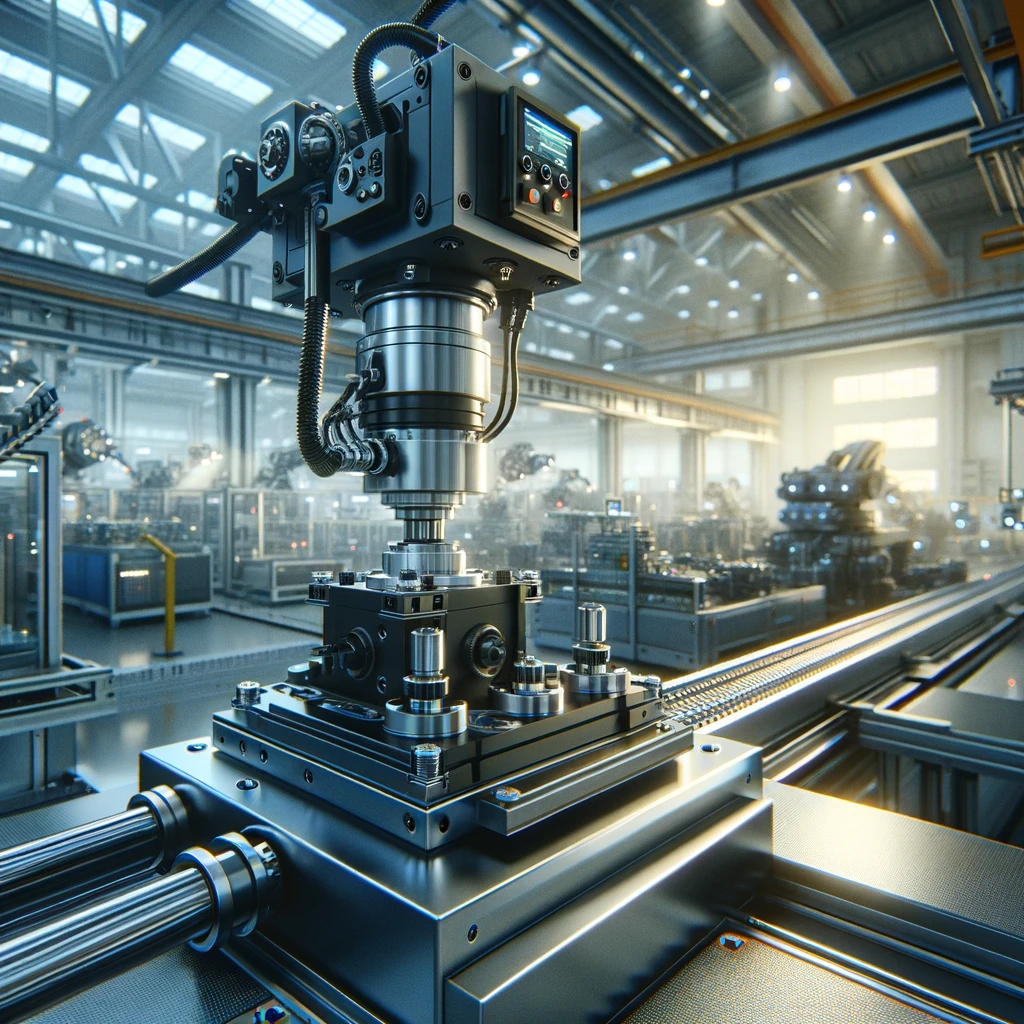
Factors To Consider When Choosing Between Single-Acting And Double-Acting Actuators
When deciding between single-acting and double-acting actuators, several factors come into play. These elements determine the most appropriate actuator type for a particular application. Understanding these aspects ensures optimal performance, efficiency, and cost-effectiveness of the valve actuation system.
Power Availability: Check power resources. Single-acting actuators require less power as they operate using a single source of pressure for movement in one direction, utilizing springs for the opposite action. Double-acting actuators need power for movements in both directions, increasing energy requirements.
Control Precision: Evaluate control needs. Double-acting actuators offer better control over valve positioning because they actively manage the open and close cycles with pressure applied on both sides of the piston. This precision is crucial in applications needing exact flow control.
Safety Requirements: Consider safety protocols. Single-acting actuators have an inherent fail-safe mechanism due to their spring-return feature, making them suitable for emergency shutdowns (ESD) and safety instrumented systems (SIS).
Speed: Look at operation speed. Single-acting actuators may be faster in one direction due to the spring force but slower in the opposite direction when relying on fluid or air pressure alone. Double-acting actuators provide consistent speeds in both directions since they use pressure to move the actuator piston.
Installation Space: Account for space constraints. Single-acting actuators often occupy less space because of their simpler design and absence of additional mechanisms required to control movement in two directions, which could be essential in compact areas.
Maintenance and Cost: Factor in long-term maintenance and upfront costs. Single-acting actuators might have lower initial costs but could require more maintenance if springs weaken over time. Double-acting actuators generally have higher purchase prices but potentially lower maintenance demands due to fewer moving parts subject to wear.
Can Double-Acting Actuators Be Used In All The Same Applications As Single-Acting Actuators?
No, double-acting actuators cannot be used in all the same applications as single-acting actuators. Double-acting actuators require pressurized air for both opening and closing actions, while single-acting actuators use spring force for one direction. The choice between the two depends on factors like safety requirements, energy efficiency, and system complexity.
Are Single-Acting Actuators More Cost-Effective Than Double-Acting Actuators?
Yes, in general, single-acting actuators can be more cost-effective than double-acting actuators. This is because single-acting actuators require less air since they use spring force for one motion. However, the overall cost-effectiveness can depend on the specific application, installation, and maintenance expenses.
Can The Choice Between Single-Acting And Double-Acting Valve Actuators Affect Energy Efficiency?
Yes, the choice between single-acting and double-acting valve actuators can affect energy efficiency. Single-acting actuators, which use spring force for one direction and air pressure for the other, typically consume less air and thus can be more energy-efficient than double-acting actuators that use air pressure for both directions. However, system requirements and operational parameters should be considered for the optimal choice.
In Conclusion
In summary, while single-acting valve actuators offer simplicity and cost-effectiveness for specific applications, double-acting valve actuators provide greater control and efficiency for demanding operations.
To ensure the optimal performance of your industrial systems, consider discussing your specific needs with our experienced team. Explore our comprehensive range of valve actuators today to enhance your operational efficiency and reliability.

